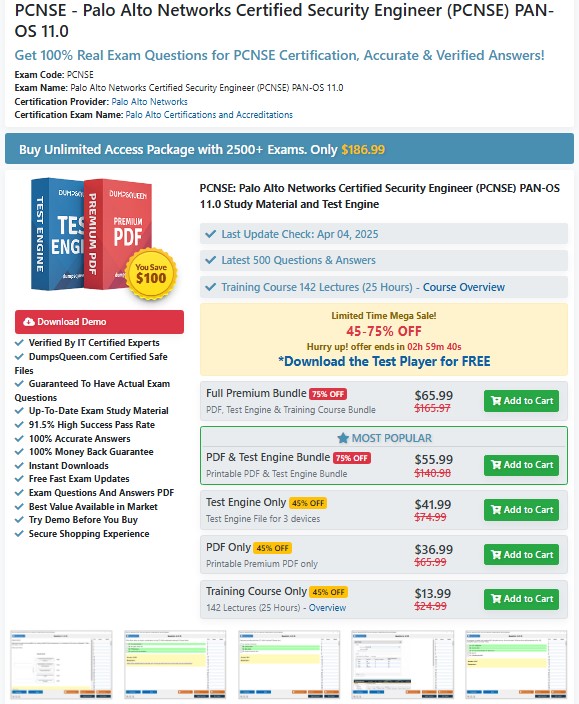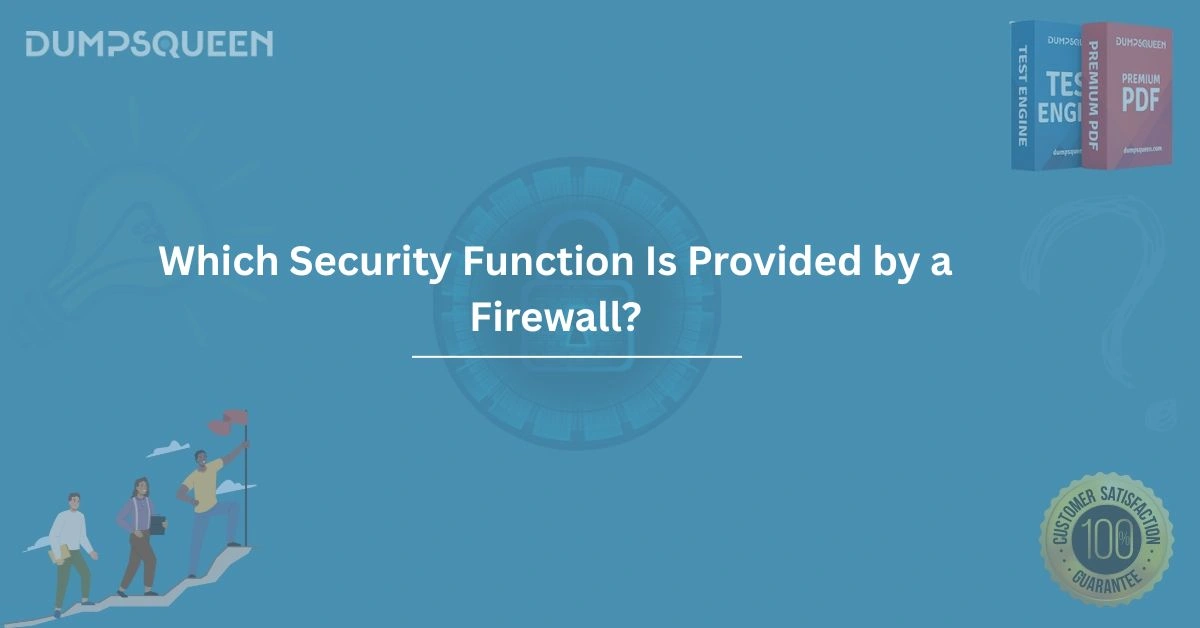Introduction
In an era where cyber threats are evolving at an unprecedented pace, securing a network is a critical priority for organizations and individuals alike. Among the many tools available for safeguarding digital environments, firewalls stand as a cornerstone of network security. But what specific security functions do firewalls provide, and why are they so essential? At DumpsQueen, we understand the importance of mastering network security concepts, whether you're preparing for certifications or seeking to fortify your organization’s defenses. This comprehensive guide explores the primary security functions of a firewall, delving into its mechanisms, benefits, and real-world applications. By the end, you’ll have a clear understanding of how firewalls protect networks and why they are indispensable in today’s cybersecurity landscape.
Understanding the Role of a Firewall in Network Security
A firewall is a network security device or software that monitors and controls incoming and outgoing network traffic based on predefined security rules. Acting as a gatekeeper, it determines which traffic is allowed to pass and which is blocked, effectively creating a barrier between a trusted internal network and untrusted external networks, such as the internet. Firewalls have been a fundamental component of cybersecurity since their inception in the late 1980s, evolving from simple packet filters to sophisticated systems capable of deep packet inspection and advanced threat detection.
At its core, a firewall’s primary function is to protect a network by enforcing access control policies. This involves analyzing data packets—small chunks of data transmitted over a network—and determining whether they meet the criteria for safe passage. By doing so, firewalls prevent unauthorized access, mitigate cyber threats, and ensure the confidentiality, integrity, and availability of network resources. DumpsQueen emphasizes the importance of understanding these functions, as they are often covered in certifications like CompTIA Security+, Cisco CCNA, and other cybersecurity exams.
Packet Filtering: The Foundation of Firewall Security
One of the earliest and most fundamental security functions provided by a firewall is packet filtering. Packet filtering involves examining the headers of data packets to determine whether they should be allowed or denied based on information such as source and destination IP addresses, port numbers, and protocol types. This process occurs at the network layer (Layer 3) of the OSI model, making it a fast and efficient way to control traffic.
For example, a firewall might be configured to allow HTTP traffic (port 80) from a specific IP address while blocking all other traffic. This selective filtering ensures that only legitimate traffic enters or exits the network, reducing the risk of unauthorized access. However, packet filtering has limitations, as it does not inspect the content of the packets, making it less effective against sophisticated attacks that exploit application-layer vulnerabilities. Despite this, packet filtering remains a critical function, forming the foundation of many firewall configurations. DumpsQueen’s study resources can help you master packet filtering concepts, ensuring you’re well-prepared for certification exams that test this knowledge.
Stateful Inspection: Enhancing Security with Context
As cyber threats became more complex, firewalls evolved to include stateful inspection, a more advanced security function. Unlike traditional packet filtering, which examines packets in isolation, stateful inspection tracks the state of active connections and makes decisions based on the context of the traffic. This means the firewall maintains a state table that records details about ongoing connections, such as whether a packet is part of an established session or an attempt to initiate a new one.
For instance, if a user initiates a connection to a web server, the firewall records the session details and allows return traffic from the server to pass through. However, unsolicited packets that do not match an existing session are blocked. This contextual awareness significantly enhances security by preventing attacks like IP spoofing and session hijacking. Stateful inspection operates at both the network and transport layers (Layers 3 and 4), offering a balance between performance and protection. At DumpsQueen, we provide detailed guides on stateful inspection, helping you understand its role in modern firewalls and its relevance to cybersecurity certifications.
Application-Layer Filtering: Deep Packet Inspection for Advanced Protection
In response to the rise of application-layer attacks, such as SQL injection and cross-site scripting (XSS), firewalls have incorporated application-layer filtering, also known as deep packet inspection (DPI). This security function involves analyzing the content of data packets, not just their headers, to identify and block malicious payloads. By operating at the application layer (Layer 7), DPI firewalls can inspect protocols like HTTP, FTP, and SMTP, ensuring that only safe and legitimate traffic is allowed.
For example, a DPI firewall might detect and block an HTTP request containing malicious code, even if the packet’s header information appears legitimate. This level of scrutiny is particularly valuable in protecting against zero-day exploits and advanced persistent threats (APTs). However, DPI requires significant processing power, which can impact performance in high-traffic environments. Despite this trade-off, application-layer filtering is a critical function for organizations seeking to safeguard sensitive data and applications. DumpsQueen’s certification prep materials cover DPI in detail, equipping you with the knowledge to tackle related exam questions with confidence.
Network Address Translation: Masking for Enhanced Security
Another important security function provided by firewalls is Network Address Translation (NAT). While NAT is primarily used to conserve IP addresses by mapping private IP addresses to a single public IP address, it also enhances security by hiding internal network structures from external entities. By masking the true IP addresses of devices within a network, NAT makes it more difficult for attackers to target specific systems directly.
For example, when a device on a private network sends a request to an external server, the firewall uses NAT to replace the device’s private IP address with the firewall’s public IP address. The server responds to the public IP, and the firewall routes the response back to the original device. This process obscures the internal network’s topology, reducing the attack surface. NAT is particularly effective when combined with other firewall functions, such as packet filtering and stateful inspection. DumpsQueen’s resources explain NAT’s dual role in address management and security, helping you grasp its significance in network protection.
Intrusion Prevention: Proactive Threat Mitigation
Modern firewalls often include intrusion prevention system (IPS) capabilities, which go beyond traditional filtering to actively detect and block potential threats in real time. An IPS-enabled firewall analyzes network traffic for signatures of known attacks, such as malware or denial-of-service (DoS) attempts, and takes immediate action to neutralize them. This might involve dropping malicious packets, resetting connections, or alerting administrators to the threat.
Unlike intrusion detection systems (IDS), which only monitor and report suspicious activity, IPS firewalls are proactive, intervening to stop attacks before they cause harm. This function is particularly valuable in defending against exploits targeting vulnerabilities in operating systems, applications, or network protocols. By integrating IPS with other firewall functions, organizations can create a robust defense-in-depth strategy. DumpsQueen’s study guides cover IPS concepts extensively, ensuring you’re well-versed in this critical aspect of firewall security for certification exams.
Virtual Private Network Support: Securing Remote Access
Firewalls also play a key role in securing remote access through Virtual Private Network (VPN) support. A VPN creates a secure, encrypted tunnel between a remote user and the internal network, protecting data transmitted over untrusted networks like the internet. Firewalls with VPN capabilities authenticate users, encrypt traffic, and enforce access controls, ensuring that only authorized individuals can connect to the network.
For example, a firewall might use IPsec or SSL protocols to establish a VPN, allowing employees to access corporate resources securely from remote locations. This function is essential for organizations with distributed workforces or those that rely on cloud-based services. By integrating VPN support with other security functions, firewalls provide comprehensive protection for both on-premises and remote users. DumpsQueen’s certification prep materials include detailed explanations of VPN technologies, helping you understand their role in firewall security.
Logging and Monitoring: Ensuring Accountability and Compliance
Another critical security function of firewalls is logging and monitoring network activity. Firewalls maintain detailed logs of all traffic passing through them, including allowed and denied packets, connection attempts, and detected threats. These logs provide valuable insights into network behavior, enabling administrators to identify potential security incidents, troubleshoot issues, and ensure compliance with regulatory requirements.
For instance, a firewall log might reveal repeated failed login attempts from a specific IP address, indicating a possible brute-force attack. By analyzing these logs, organizations can take proactive measures to strengthen their defenses. Additionally, logging is essential for compliance with standards like GDPR, HIPAA, and PCI DSS, which require organizations to maintain records of network activity. DumpsQueen’s resources highlight the importance of logging and monitoring, equipping you with the knowledge to address related exam questions effectively.
Conclusion
Firewalls are indispensable tools in the fight against cyber threats, providing a wide range of security functions that protect networks from unauthorized access, malicious attacks, and data breaches. From packet filtering and stateful inspection to deep packet inspection, NAT, intrusion prevention, VPN support, and logging, firewalls offer a multi-layered approach to network security. Understanding these functions is not only crucial for securing digital environments but also for excelling in cybersecurity certifications. At DumpsQueen, we are committed to helping you master these concepts through our comprehensive study resources and practice exams. Whether you’re preparing for a certification or seeking to enhance your organization’s security posture, a deep understanding of firewall functions will empower you to navigate the complex world of cybersecurity with confidence. Visit DumpsQueen today to explore our high-quality materials and take the next step in your cybersecurity journey.
Free Sample Questions
Question 1: Which firewall function involves examining the content of data packets to detect malicious payloads?
A) Packet Filtering
B) Stateful Inspection
C) Deep Packet Inspection
D) Network Address Translation
Answer: C) Deep Packet Inspection
Question 2: How does Network Address Translation (NAT) enhance network security?
A) By encrypting data packets
B) By hiding internal IP addresses
C) By inspecting packet contents
D) By tracking connection states
Answer: B) By hiding internal IP addresses
Question 3: What is the primary advantage of stateful inspection over traditional packet filtering?
A) It inspects packet contents
B) It tracks the state of connections
C) It operates at the application layer
D) It requires less processing power
Answer: B) It tracks the state of connections
Question 4: Which firewall function is critical for securing remote access to a network?
A) Intrusion Prevention
B) Logging and Monitoring
C) Virtual Private Network (VPN) Support
D) Packet Filtering
Answer: C) Virtual Private Network (VPN) Support



